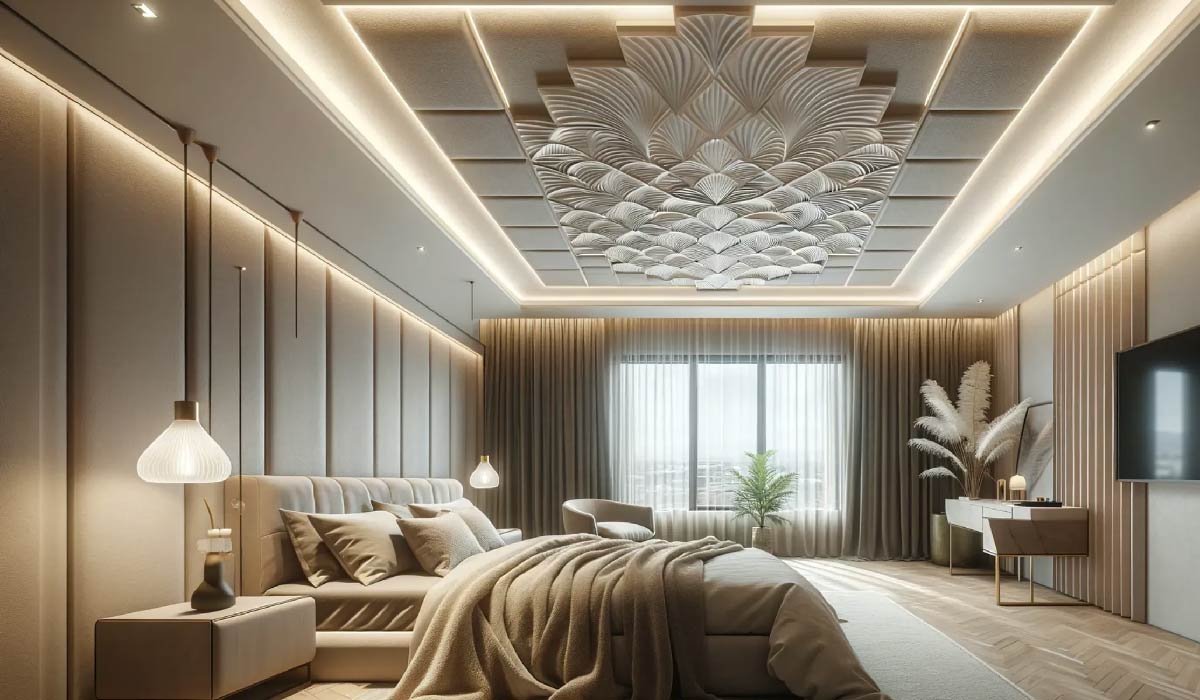Business
Elevating Interiors: The Impact of Ceiling Tiles on Design Aesthetics

Introduction
The ceiling often referred to as the fifth wall in a room, holds significant potential to transform the aesthetics and atmosphere of an interior space. Interior designers are tapping into this potential to create distinctive and impactful environments, utilising a range of materials and design techniques. Among these, ceiling tiles have emerged as a versatile and functional element in the designer’s toolkit, offering both aesthetic and practical benefits. This article explores the transformative power of ceiling tiles in interior design.
The Aesthetics of Ceiling Design
Designers have long appreciated the role of ceilings in forming a room’s character. The colour, texture, material, and overall design of a ceiling can significantly affect the perception of space and comfort. Whether by a simple coat of paint, elaborate moldings, or modern ceiling tiles, the ceiling’s contribution to a room’s beauty and style cannot be overlooked.
Ceiling Tiles: A Versatile Choice
Ceiling tiles, a prominent design choice, offer a wide array of options in terms of materials, textures, and patterns. They can be manufactured from different materials such as metal, mineral fibre, wood, and polystyrene, each lending itself to different design aesthetics and functional properties. Moreover, ceiling tiles can be easily adapted to suit any design theme, from classic and ornate to modern and minimalistic.
The Impact of Texture and Pattern
The texture and pattern on ceiling tiles play an essential role in creating design depth and visual interest. Textured tiles can produce shadow play and acoustic benefits, whereas patterned tiles can mimic traditional designs or provide a modern geometric appeal. The choice of texture and pattern can also influence the perceived scale and proportion of the room.
Colour and Light Reflection
Ceiling tiles come in various colours and finishes, each capable of either absorbing or reflecting light to different degrees. Light-coloured tiles can help in maximising natural light diffusion across the room, making the space appear brighter and larger. Conversely, darker tiles can add drama and intimacy to a space, as well as mask ceiling imperfections.
Acoustic Performance
Functionality is as crucial as aesthetics when it comes to selecting ceiling tiles. High-performance acoustic tiles can significantly reduce noise levels, which is particularly important in spaces such as offices, schools, and healthcare facilities. Effective acoustic management contributes not only to comfort but also to privacy and productivity.
Sustainability and Eco-friendliness
In today’s environmentally conscious era, sustainable design is a primary consideration. Many ceiling tiles are made from recycled materials and can be further recycled at the end of their life cycle, thus reducing environmental impact. This sustainable aspect is an increasingly important criterion in the selection process for design professionals and clients alike.
Ease of Installation and Maintenance
Ceiling tiles are favoured for their ease of installation and maintenance. They can be quickly replaced if damaged, and many are designed to provide easy access to the space above them, which is convenient for the maintenance of electrical and HVAC systems. This functionality enhances their appeal in both new builds and renovation projects.
Customisation and Personalisation
The flexibility to customise ceiling tiles for a particular design vision is another reason for their popularity. Personalisation can range from the selection of unique patterns and textures to custom colours and finishes that align with a brand’s identity or a homeowner’s personal style.
Innovations in Ceiling Tile Design
Technological advancements have facilitated innovative designs and functional improvements in ceiling tiles. Digital printing, embossing techniques, and new materials allow for a higher degree of personalisation while ensuring longevity and durability. These innovations have unlocked new possibilities for designers to create unique and memorable interior spaces.
Case Studies and Inspirations
Exceptional interior designs often include clever uses of ceiling tiles. A visit to a high-end hotel or a corporate headquarters might reveal a stunning ceiling design that adds to the building’s narrative, branding, or function. In residential spaces, ceiling tiles can be employed to add character to living areas or to address practical needs in kitchens and bathrooms.
The Future of Ceiling Design
The future of ceiling design is bright, with materials and technology constantly evolving. Designers anticipate more responsive and interactive ceiling tiles, capable of adapting to environmental changes or the needs of the occupants. As innovation continues, the potential for ceiling design to impact interior aesthetics will only increase.
Conclusion
The role of ceiling tiles in the design and functionality of interior spaces goes far beyond mere aesthetic enhancements. They offer designers a toolbox for creating visual interest, managing acoustics, and incorporating sustainable practices. As the design industry continues to evolve, the ceiling will surely hold an esteemed place in the creation of holistic and impactful interior environments.
Final Thoughts
Whether as a statement piece or a subtle complement to the overall decor, ceiling tiles have an undeniable role in elevating interior design. By masterfully integrating form, function, and innovation, these versatile elements continue to shape and transform spaces in both visible and imperceptible ways, proving that the ceiling truly is a vital dimension of design aesthetics.
-

 Celebrity1 year ago
Celebrity1 year agoWho Is Jennifer Rauchet?: All You Need To Know About Pete Hegseth’s Wife
-

 Celebrity1 year ago
Celebrity1 year agoWho Is Mindy Jennings?: All You Need To Know About Ken Jennings Wife
-

 Celebrity1 year ago
Celebrity1 year agoWho Is Enrica Cenzatti?: The Untold Story of Andrea Bocelli’s Ex-Wife
-

 Celebrity1 year ago
Celebrity1 year agoWho Is Klarissa Munz: The Untold Story of Freddie Highmore’s Wife
















